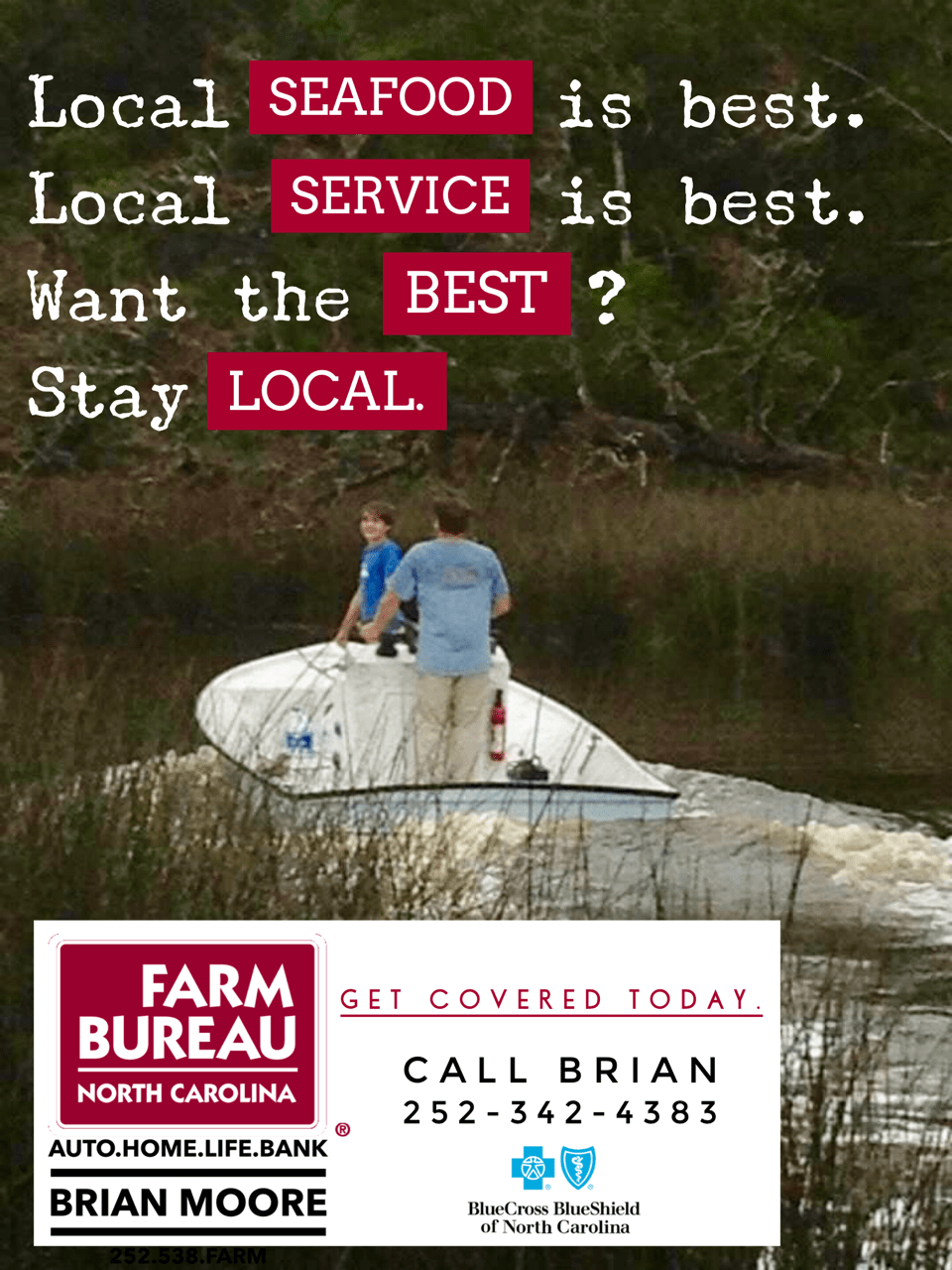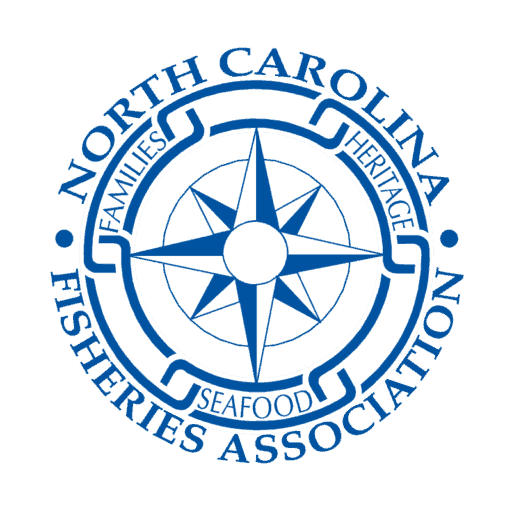North Carolina Wildlife Federation brings in the New Year with a lie!
Over the last month I’ve received two emails from Tim Gestwicki, CEO of the North Carolina Wildlife Federation, asking me, and many others, to donate money to the NCWF to help fund their efforts to eliminate inshore shrimp trawling in NC.
These two emails, like many before, contain much of the same disinformation I’ve come to expect from the Wildlife federation anytime they attempt to engage the public in the management of our coastal fisheries. As usual, Mr. Gestwicki provided the Wildlife federations, very bleak, perspective of shrimp trawling with no mention of the many achievements North Carolina has made in our efforts to reduce bycatch and protect critical estuarine habitat.
He also failed to mention that NC shrimpers produce on average, 10 million pounds of shrimp, or food, annually. A very important fact, when you consider that more than half of Americans consume seafood on a regular basis and that shrimp is the #1 seafood preferred by American consumers.
The one thing the folks at NCWF never forget to mention, when seeking to enrage the public, is their shrimp to bycatch ratio. I’d be willing to bet that by now, most of you have heard that in NC 4.5 pounds of fish are caught for every pound of shrimp harvested. I’d also bet that very few, if any, know where this shrimp to bycatch ratio originated or if it accurately represents what’s actually occurring in North Carolinas shrimp trawl fishery.
The first time I heard the ratio of 4.5 pounds of finfish to every pound of shrimp was in 2013, when Tim Hergenrader filed a petition for rulemaking seeking to designate all North Carolinas internal waters as Secondary Nursery Areas, which would have eliminated inshore trawling. At the time, the petitioner stated, on the record, that the estimated bycatch to shrimp ratio came from Dr. Louis Daniel who was the Director of the NC Division of Marine Fisheries at that time.
That’s right, the former NCDMF Director, with a doctorate in marine biology, provided the shrimp to bycatch ratio for the petitioners, so they must be accurate. Right?
Wrong!
On August 29th, 2013, while the MFC reviewed Mr. Hergenrader’s petition, another marine biologist, Dr. Allyn Powell, challenged the credibility of the 4.5 to 1 ratio and Dr. Daniel agreed that the ratio, he had provided, was “not a good estimate.” Dr. Daniel went on to say that he “was concerned about giving that number, but I was really put under a position where I had to give a number. I don’t like the number any more than you do. It’s not the appropriate way to characterize bycatch.”
Unfortunately, Dr. Daniel chose to avoid all previous opportunities to express his concerns with the 4.5 to 1 ratio, he had provided, and only chose to make his concerns known after Dr. Powell had publicly challenged the validity of those estimates.
Despite Dr. Daniels public admission that his estimates were not the appropriate way to characterize bycatch, more than eight years later the NC Wildlife Federation still uses the 4.5 to 1 bycatch to shrimp ratio and has made it the focus of their campaign to eliminate inshore shrimp trawling.
Now, it would be easy to lay the blame solely on the shoulders of Dr. Daniel and assume that the Wildlife Federations use of these flawed estimates was simply out of ignorance, if it weren’t for the fact that Dr. Daniel is now employed by the North Carolina Wildlife Federation. That’s right, the same Dr. Daniel who first provided the 4.5 to 1 ratio and then acknowledged “it’s not the appropriate way to characterize bycatch” now works for the organization that has built a public campaign around his flawed estimates!
You couldn’t make this stuff up if you tried!
Of course, it’s been a while since Dr. Daniel has publicly expressed his concerns with the use of the 4.5 to 1 finfish to shrimp ratio, to characterize shrimp trawl bycatch. It appears that his interpretation of the science has changed along with the signature on his paycheck.
So much for scientific integrity.
As a child my grandmother used to tell me one lie leads to another, and another until it becomes impossible to tell the truth without exposing your past lies. This leads me to the “new lies” of the NCWF.
In the email I received on November 29th the Wildlife Federation used their time tested, yet inaccurate, claim that “for every pound of shrimp caught in North Carolina waters by trawls, more than four pounds of finfish and other marine life are caught, killed and shoveled overboard.” Just one month later, in the email I received on December 28th, they are claiming NC shrimpers are “killing nearly nine pounds of juvenile fish for every pound of shrimp harvested in North Carolina sounds.” I guess 4.5 pounds of finfish wasn’t meeting their fund-raising goals, so they simply doubled their estimate in hopes of doubling their donations.
Afterall, only 7% of North Carolinians live on the coast and most coastal residents have never been on a shrimp boat, so the odds are, most who received Mr. Gestwicki’s email have no idea whether the information, provided by NCWF, is accurate or not. The truth is the truth is seldom used when the Wildlife Federation seeks to “educate” the public about our coastal fisheries.
Consider this, if you received an email stating that nearly half of North Carolinas estuarine waters, nearly a million acres, were already permanently closed to trawling. Or that NC had the strictest requirements for the use of bycatch reduction devices of any coastal state in the US, reducing the incidental bycatch of finfish by nearly double the Federal requirements. You probably wouldn’t be clambering for your check book eager to help the Wildlife Federation fulfill their mission to eliminate shrimp trawling, and the food it produces, in 2022!
Would you?
In 2022, I’ve made it a priority to expose the deceit that permeates the messaging of groups like the North Carolina Wildlife Federation and Coastal Conservation Association. In order to do this, I need your help, but not in the form of donations like these other groups are requesting. I simply ask that each of you do your part by sharing the truth with as many folks as you can.
Together we can set the record straight and paint an accurate picture of North Carolina’s oldest industry, commercial fishing.
Happy New Year!
Glenn Skinner
NCFA-Executive Director

